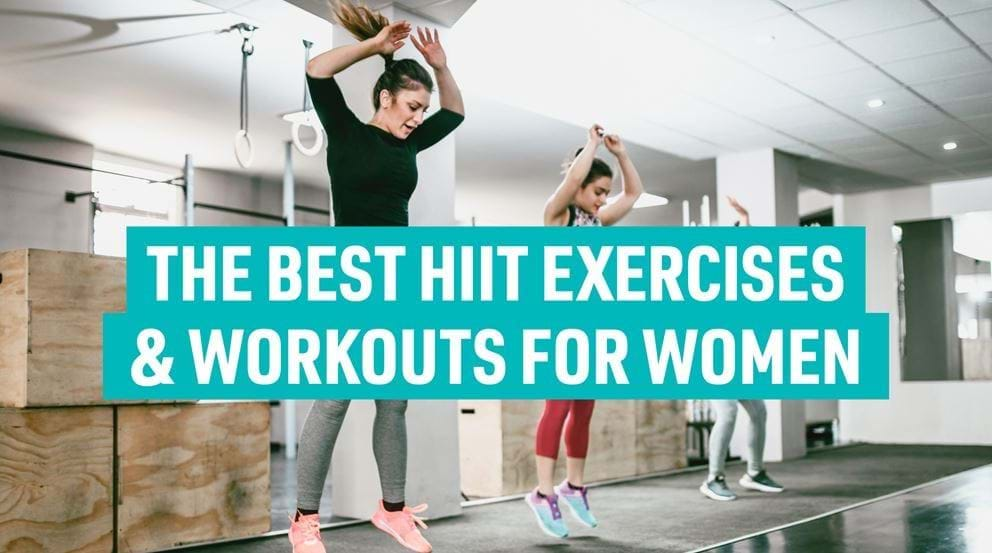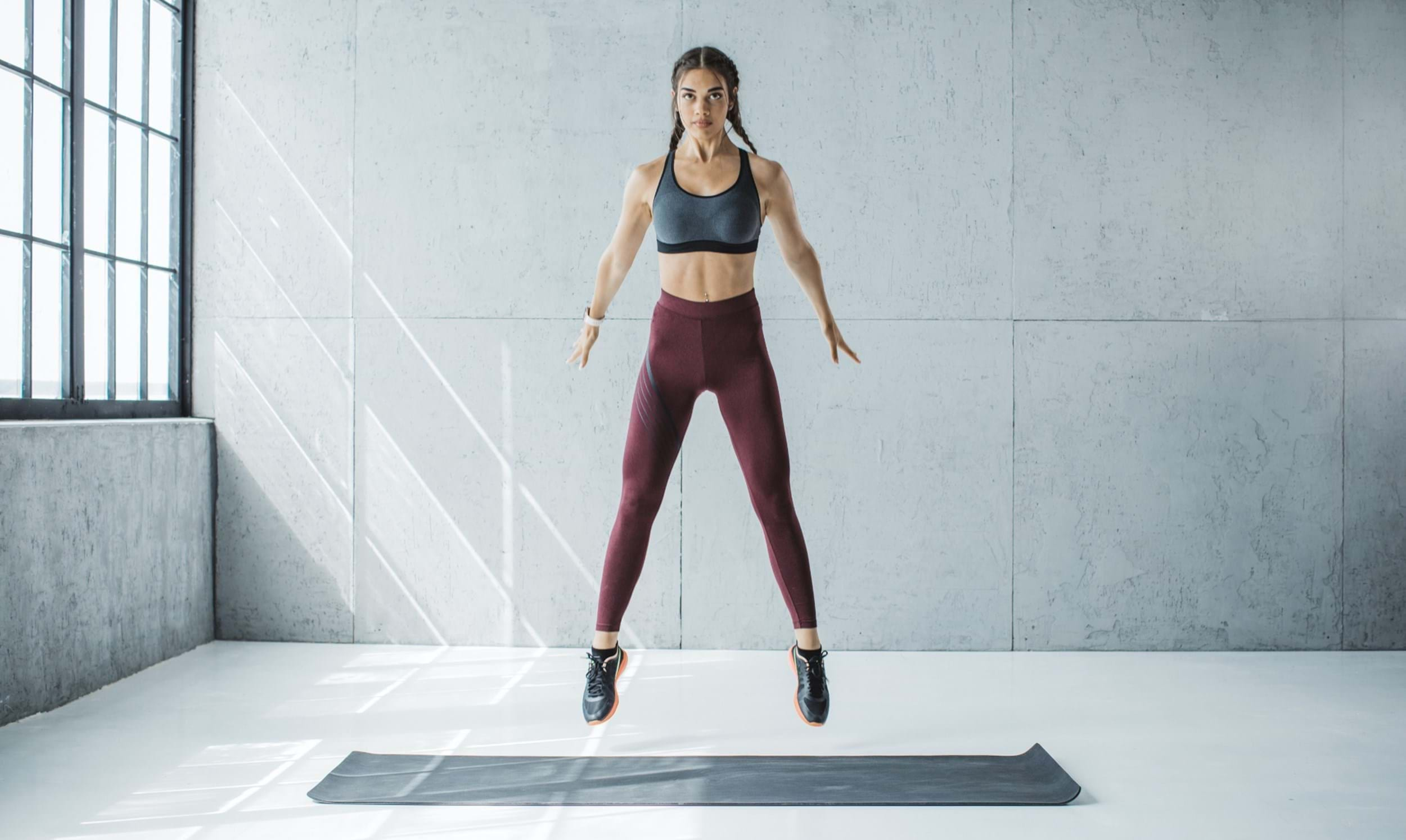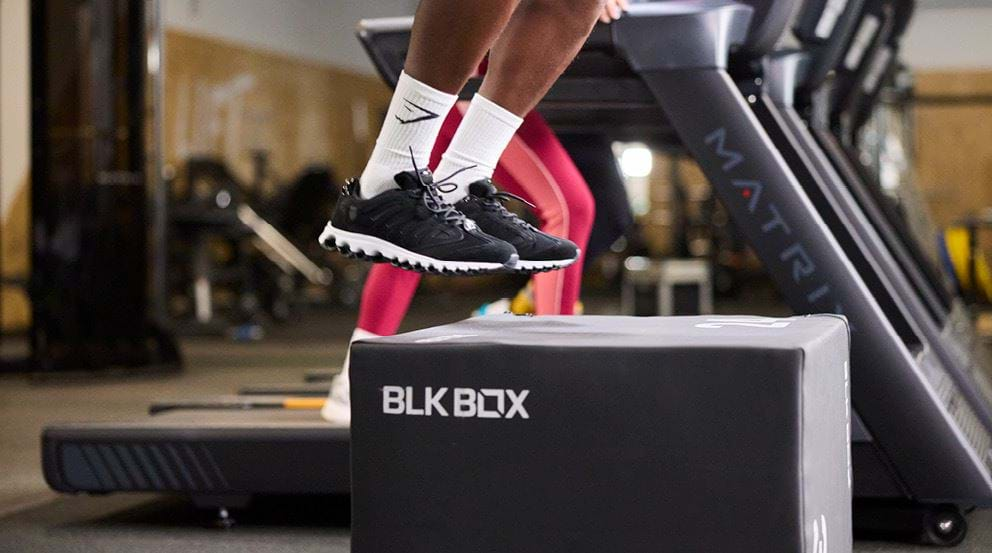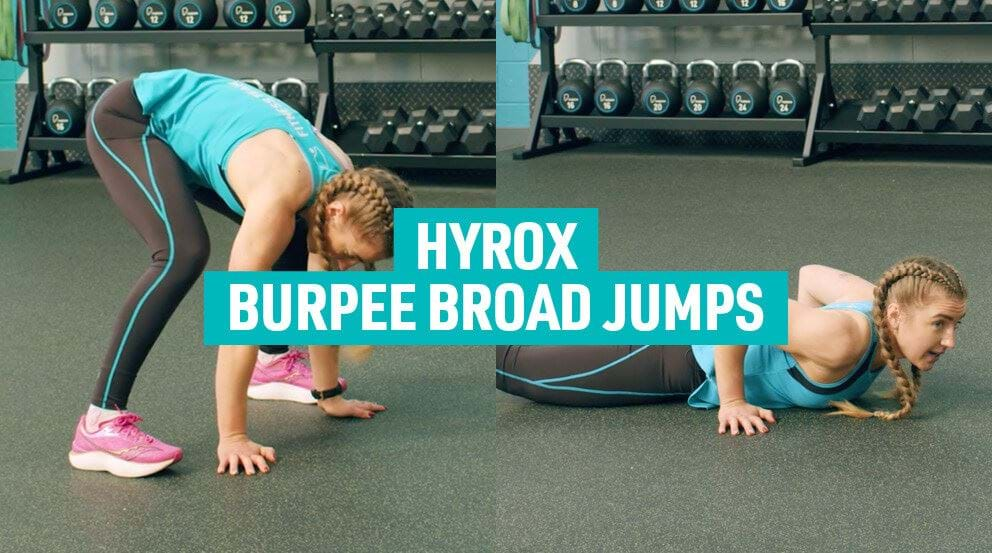The Best HIIT Exercises & Workouts for Women

Too busy to exercise? What if we told you that you can get all the health benefits of working out, in less time than an episode of your favourite Netflix show?
With lack of time often cited as one of women's biggest barriers to exercise, it's important to be aware that you don't have to spend hours exercising to make a workout worthwhile.
Whether done in the gym or at home, on a treadmill or with weights, high intensity interval training (HIIT) is a workout format that's as flexible as it is convenient, making it a good go-to whenever time, energy, or motivation are in short supply.
That's because HIIT is more of a framework than a particular type of exercise (like boxing or weightlifting, for example), so it can be adapted to whatever type of workout you like doing, and to the time and equipment you have on hand.
For a workout to be considered HIIT, it needs to pair short periods of intense exercise with a period of rest or active recovery. In a HIIT running session, for example, you might go from a slow jog to a 30-second sprint and back again, before repeating the cycle a number of times.
Are HIIT workouts good for women?
HIIT is an effective way for everyone to boost their fitness, improve their endurance and keep their metabolic rate fired up long after they've finished exercising. But evidence suggests that women may receive a bigger health boost when they keep their workouts short, sweet, and intense.
One study discovered that when women and men did the same treadmill HIIT workout, it was the women who worked at a higher percentage of their maximum heart rate and oxygen consumption. Women also release more human growth hormone than men when doing HIIT. Other hormonal benefits of HIIT include improving insulin sensitivity, which can help manage PCOS symptoms.
How often should women do HIIT?
Yes, HIIT can produce amazing results. Yes, you can do the workouts in a jiffy. But that doesn't mean you should do these high intensity sessions every day. Three times a week, with at least a day's recovery in between each workout, is plenty. But why should you limit your HIIT?
It's all down to cortisol, a stress hormone produced when you're exercising at (or near) your peak. When you're running, cycling or rowing at maximum exertion, your brain thinks your survival is at risk which triggers the release of cortisol. That's great in the short-term because it's cortisol that causes all those metabolic improvements (aka turning your body into a lean, mean calorie-eating machine).
But without proper recovery, cortisol can remain elevated in the bloodstream, causing a stress response that lasts long after you've finished working out. That's bad news, because in the long-term it can suppress your immune system and even affect your sleep.
Limiting HIIT to two or three times a week means you get all the benefits of HIIT workouts, without putting too much stress on your body.
What are the best HIIT workouts for women?
The beauty of HIIT is that you can take any workout you enjoy, and put it into a HIIT style format. The best HIIT workout, or any workout for that matter, is one you enjoy. Forcing yourself to exercise in ways you don't like means you're much less likely to stick with it, even if it is just a short HIIT session.
If you like lifting weights, why not create a HIIT circuit with 4-5 dynamic exercises? If you love the rowing machine, try rowing 200m between 60-75% max, resting for 60 seconds and repeating this three times. Find out how to set up your rowing machine here. You can even turn walking into a HIIT workout!
Total HIIT newbie? Read our beginner's guide to get started.

Three HIIT workouts for women
All that said, we've put together three great workouts full of HIIT exercises for women. Each one takes 20 to 25 minutes meaning they're a great way to crush your fitness goals, whether you're a busy mum or you're trying to squeeze in a workout on your lunch break.
They each include a warm-up and cool-down, which are both important components of any good HIIT workout. The warm-up increases blood flow and circulation to your muscles, something that can help you prevent injury. The cool-down helps your heart rate, breathing and blood pressure decrease gradually, all things that can stop you from feeling dizzy.
Women's HIIT workout for fat-burning
Why it works: HIIT lets you burn lots of calories in a short space of time. In one study, a 30-minute HIIT session was found to burn 25 to 30 per cent more calories than weight training, running ,or biking.
But one of HIIT's best-known benefits is that it lets you keep burning calories even when your workout is over, in a process known as EPOC (excess post-exercise oxygen consumption). Your body burns extra energy as it recovers from an intense activity like HIIT to fuel its many recovery processes, such as removing lactic acid, repairing muscles, and synthesising fresh hormones.
In this workout, you'll be getting even more for your workout buck. That's because it contains the top 10 best calorie-burning exercises recommended by personal trainers, all put together in a HIIT framework.
Five minutes of moderate-paced cardio of your choice
Recovery: Recover for 30 seconds between each exercise, before moving on to the next round
Cool-down: Walk for five minutes at a moderate pace, slowing down your walking speed each minute.
The workout:
- 30 seconds of burpees
- 30 seconds of press-ups
- 30 seconds of kettlebell swings
- 30 seconds of mountain climbers
- 30 seconds of squats
- 30 seconds of deadlifts
- 30 seconds of lunges
- 30 seconds of bent-over rows
- 30 seconds of squat jumps
Want to switch up any of these exercises for something else? Our in-depth guides will help, and they can show you the proper form.
Women's HIIT workout for menopause
Why it works: HIIT is great for hormone balance, but it's particularly good for women during the menopause transition. Not only can HIIT improve insulin sensitivity and lower fasting blood sugar levels at a time when both of these important mechanisms are harder to manage, but it can also reduce the risk of cardiovascular disease.
In this workout, you'll be keeping intervals to short 30-second bursts, with longer rest periods of a minute and a half. That's to limit increases in cortisol, because during menopause your levels of the stress hormone can already be elevated.
Menopause can increase the risk of osteoporosis, so this weight-bearing treadmill HIIT workout is aimed at improving bone density. But resistance exercise is also vitally important during the menopause transition, to ward off age-related muscle loss. Because it's so important, strengthening exercises should be done without time constraints so you can concentrate on the proper form and to reduce the risk of injury. Not sure where to start? Getting a personal trainer is a great idea.
Warm-up: Five minutes moderate walk
Recovery: Recover for a minute and a half between each interval of exertion.
Cool-down: Walk for five minutes at a moderate pace, slowing down your walking speed each minute.
The workout:
Five 30-second intervals of maximum or near-maximum exertion (whether that's a sprint, jog or even a fast walk for you) with one and a half minute's rest in between.
Find out more about exercise and nutrition during the menopause transition.
Women's HIIT workout for body composition
Why it works: Because HIIT exercises are anaerobic, lean muscle is preserved while we're burning calories. HIIT also sends a message to your brain that you need more human growth hormone. This in turn increases testosterone, helping you build more muscle mass and giving you the energy you need.
In this workout, you'll be performing each exercise at a high intensity for 40 seconds, with a 20-second recovery between. It's full of explosive moves and is performed with weights, but you could also use resistance bands.
Warm-up: Using resistance bands or lighter versions of the weights you want to use for the main workout, run through all of the exercises at least once to activate the muscles you'll be using.
Recovery: Recover for 20 seconds between each exercise.
Cool-down: Walk for five minutes at a moderate pace, slowing down your walking speed each minute.
The workout:
- 40 seconds of walking weighted lunges
- 40 seconds of kettlebell swings
- 40 seconds of dumbbell renegade rows
- 40 seconds of goblet squats
- 40 seconds of weighted sled pushes
Need tailored advice when it comes to achieving your fitness goals? A Personal Trainer can provide one-on-one advice and build a bespoke programme to get you there quicker. Check out our blog for more fitness advice here.


